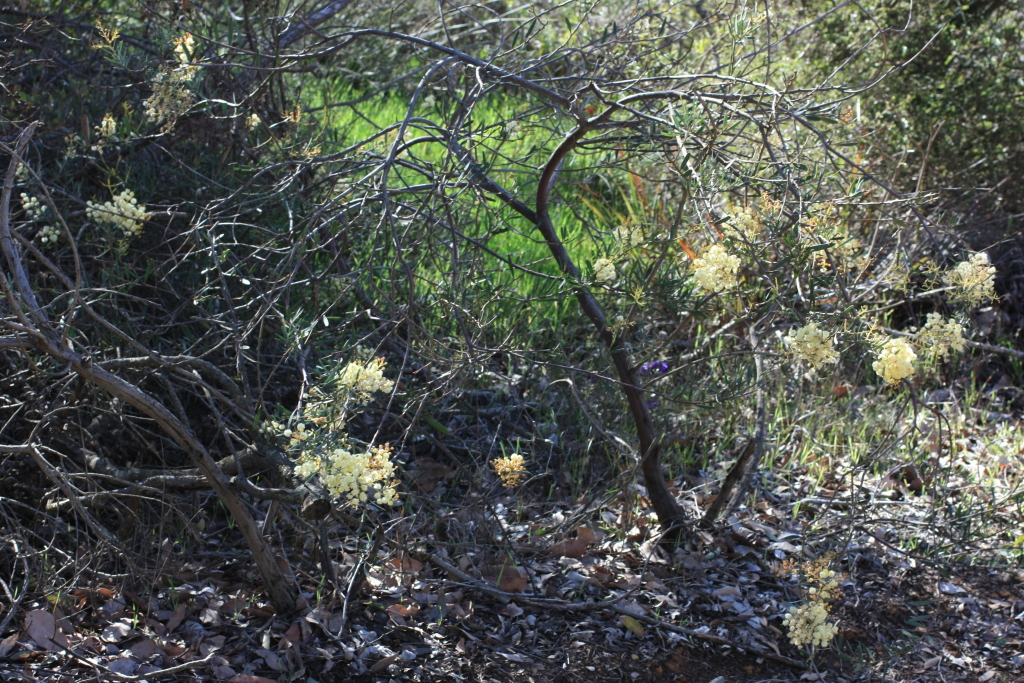Acacia rostellifera
Benth.Dense shrub or tree to 6 m high, often spreading by root suckers; branchlets scurfy. Phyllodes linear to linear-elliptic or narrowly oblanceolate, 4.5–11.5 cm long, 3–17 mm wide, 4–30 times as long as wide, sometimes slightly curved, glabrous, usually spotted with minute brown glands, recurved-mucronate to uncinate, sometimes beaked; 1-veined, sometimes imperfectly 2-veined, lateral veins obscure; gland not prominent, 4–24 mm above pulvinus, usually with a second gland below the mucro. Racemes with rachis 1–3 cm long, glabrous, 3–9-headed; peduncles 3–8 mm long, glabrous; heads globular, 15–25-flowered, golden. Flowers 5-merous, sepals united. Pods ± linear, to 9 cm long, 5–7 mm wide, submoniliform, crustaceous, breaking readily at constrictions, more or less erect, yellowish-brown, glabrous. Seeds longitudinal, oblong to elliptic, 4–6 mm long, dark brown, aril twice-folded, orange or red. Flowers Jul.–Oct.(–Dec.)
VRiv, Gold. Native to coastal areas of south-western Western Australia,. This species appears to have been planted on coastal dunes in the Barwon Heads area where it has spread and now forms dense thickets (see Reid & Murphy 2008).
Closely resembles and may be confused with A. ligulata and A. cupularis. It is generally distinguished from these species by the scurfy branchlets, phyllodes with minute brown spots, subuncinate to uncinate apex with a short mucro, and occasional presence of a faint second vein.
This species is known to spread via suckers, and may form large dense stands in favourable conditions.
Plants collected in Victoria appear to have an atypically distant gland (up to c. 24 mm above the pulvinus) compared to specimens form Western Australia which typically have the gland 4–12 mm above the pulvinus.
 Spinning
Spinning

